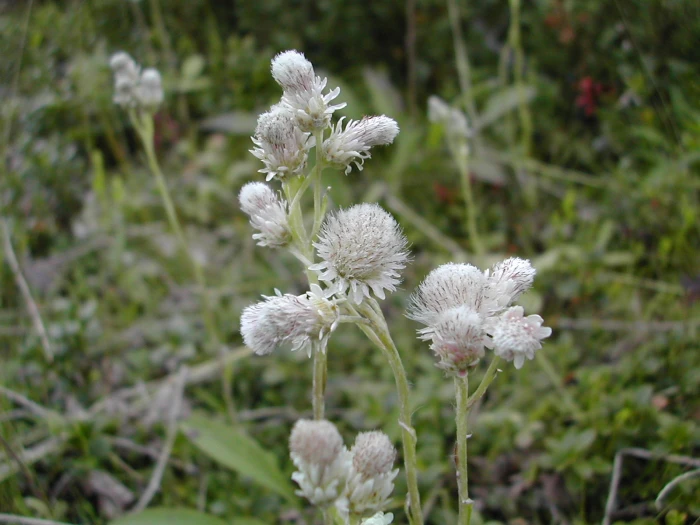Alpine Pussytoes
(Antennaria alpina)
Alpine Pussytoes (Antennaria alpina)
/
/

IdaBokmal
CC BY-SA 3.0
Image By:
IdaBokmal
Recorded By:
Copyright:
CC BY-SA 3.0
Copyright Notice:
Photo by: IdaBokmal | License Type: CC BY-SA 3.0 | License URL: https://creativecommons.org/licenses/by-sa/3.0 | Uploader: IdaBokmal | Publisher: Wikimedia Commons | Title: Antennaria_alpina1.JPG | Notes: |






















Estimated Native Range
Climate Requirements for Madison, Wisconsin
| This Plant | Your Site | Plant Suitability for Your Location | ||
|---|---|---|---|---|
| • Precipitation | 4" - 157" | 32" | Your precipitation may be too high for this plant. | Too high |
| • High Temp. | 18°F - 89°F | 83°F | Your summer temperatures are normal for this plant. | Excellent |
| • Low Temp. | -45°F - 33°F | 8°F | Your winter temperatures are normal for this plant | Excellent |
This plant may not grow well at your location - your precipitation is too high.
Summary
Antennaria alpina, commonly known as Alpine Pussytoes, is an evergreen perennial herb native to alpine regions, tundra, and subalpine meadows across the Northern Hemisphere, including the Northern Intermountain regions of the USA, Canada, and Scandinavia. It is a low-growing plant, typically reaching only 0.5 feet (0.2 meters) in height and width, with a mat-forming habit that makes it an excellent ground cover. Alpine Pussytoes feature small, woolly leaves and produce clusters of pink to white flowers in the summer, which are modest in size but can add a delicate texture to rock gardens and alpine displays.
Alpine Pussytoes are valued for their drought tolerance and ability to thrive in poor, well-drained soils, making them suitable for xeriscaping and rock gardens. They are also used in border fronts, as they form dense mats that can suppress weeds. In cultivation, they require minimal maintenance, preferring full sun to part shade and low water once established. While generally disease-free, they can occasionally suffer from root rot if overwatered or planted in poorly drained soils. Alpine Pussytoes are also appreciated for their ecological role as a food source for butterfly larvae.CC BY-SA 4.0
Alpine Pussytoes are valued for their drought tolerance and ability to thrive in poor, well-drained soils, making them suitable for xeriscaping and rock gardens. They are also used in border fronts, as they form dense mats that can suppress weeds. In cultivation, they require minimal maintenance, preferring full sun to part shade and low water once established. While generally disease-free, they can occasionally suffer from root rot if overwatered or planted in poorly drained soils. Alpine Pussytoes are also appreciated for their ecological role as a food source for butterfly larvae.CC BY-SA 4.0
Plant Description
- Plant Type: Herb
- Height: 0.1-0.6 feet
- Width: 0.083-0.5 feet
- Growth Rate: Slow
- Flower Color: White
- Flowering Season: Summer
- Leaf Retention: Evergreen
Growth Requirements
- Sun: Full Sun, Part Shade
- Water: Low
- Drainage: Fast
Common Uses
Drought Tolerant, Low Maintenance
Natural Habitat
Alpine regions, tundra, and subalpine meadows across the Northern Hemisphere
Other Names
Common Names: Alpine Catsfoot , Alpine Everlasting , Antennaire Alpine , Fjällkattfot
Scientific Names: Antennaria alpina , Antennaria alpina subsp. alpina , Antennaria alpina subsp. canescens , Antennaria pallida , Gnaphalium alpinum , Antennaria media subsp. compacta , Antennaria compacta , Antennaria intermedia , Antennaria confusa , Antennaria glabrata
GBIF Accepted Name: Antennaria alpina (L.) Gaertn.